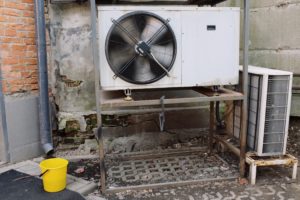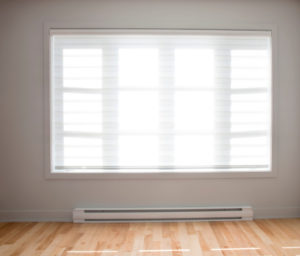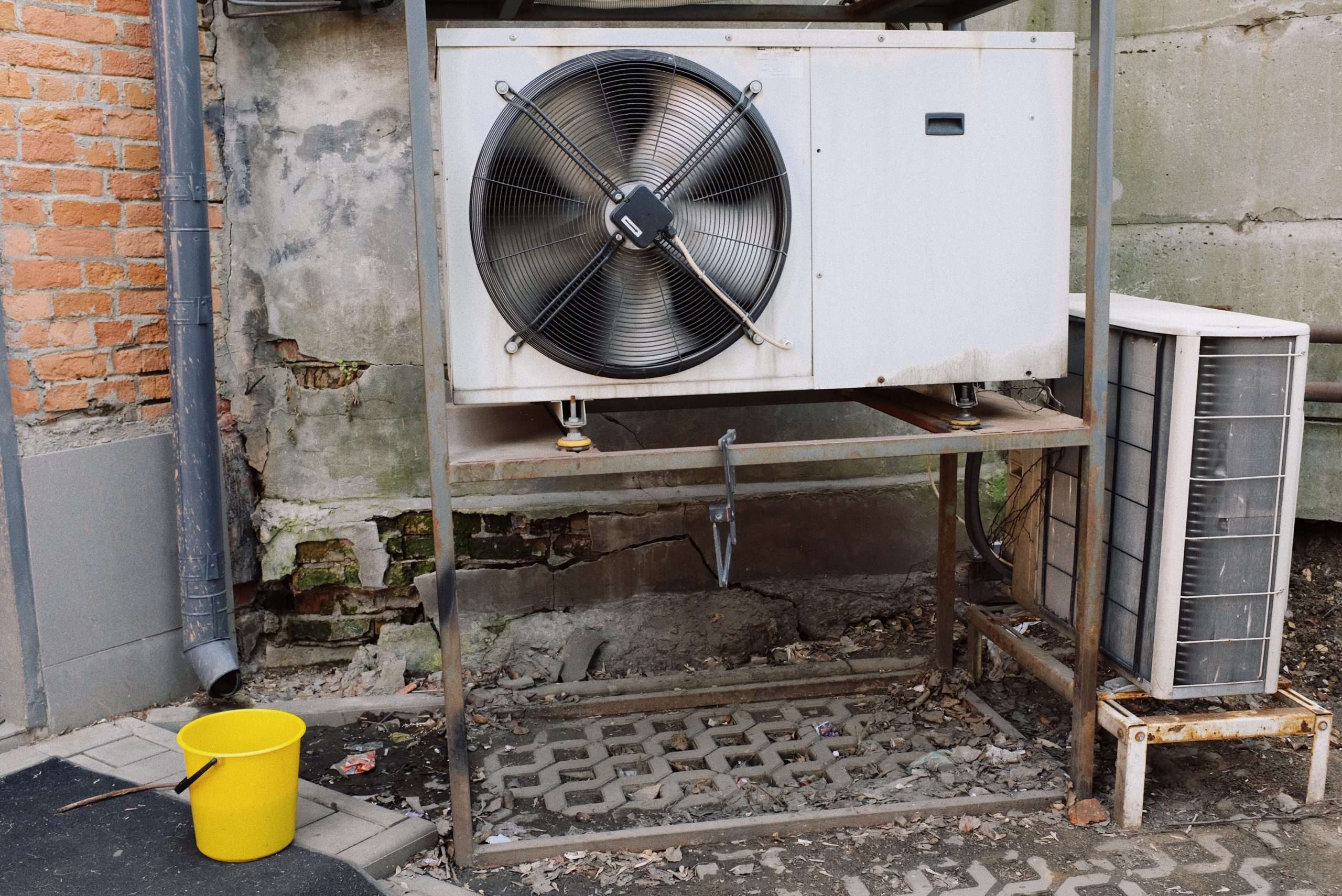This post may contain affiliate links which means I may receive a commission for purchases made through links.

When choosing a heating system for your home, you’ll come across many options like Baseboard heating, forced air, & radiant heating. However, it can be a bit confusing, especially if you want to choose between baseboard heating Vs forced air heating.
One reason for this is that forced air and baseboard heating are some of the most popular forms of heating in the US. Secondly, each type of heating has its benefits and drawbacks. Lastly, the best type of space heating tends to vary for different homeowners due to a lot of factors.
Don’t worry though! In this guide, I’ll show you how these forms of heating compare to help you find the best option for your home.
Baseboard heating

Baseboard heaters warm up various zones in the house and are controlled by thermostats installed in specific rooms. Moreover, they are usually installed beneath the windows to prevent cool outdoor air from getting into the room.
It’s also worth mentioning that baseboard heating can be classified into 2 categories; hydronic and electric heating. Hydronic heaters use either water or oil and a metal sheathed heating element to radiate heat into the house. Specifically, they feature a boiler that heats the fluid in their system and distributes it to a piping system, keeping your office/home well-heated.
On the contrary, electric baseboard heaters use electricity to generate heat through heating elements within the metal sheaths. More notably, electric baseboard heaters are suitable for heating office spaces and single rooms. However, they’re less cost-efficient when used to heat a large office space or the entire house.
Overall, baseboard heating offers excellent and consistent heating. This makes it ideal for use in rooms where you don’t want temperature fluctuations. Also, they’re healthier than other heating options since they don’t circulate forced air which can be contaminated or expel carcinogenic gases.
Benefits of baseboard heating
One major benefit of baseboard heating is it ensures silent operation. As a result, you’ll not hear any noise when they are running, making them ideal for living spaces and bedrooms. Secondly, baseboard heaters have lower initial costs. At the simple time, they don’t need ductwork, making them much easier to install.
In addition, these heating systems are energy efficient and economical, yet they provide a constant flow of heat around the house. Lastly, unlike conventional HVAC systems, baseboard heaters are eco-friendly and non-toxic. This is because they don’t circulate or expel carcinogenic gases into your home.
Drawbacks of baseboard heating
On the downside, baseboard heating systems may take a longer time to heat a room, especially if it’s large. On the same note, they can be expensive to run for heavy use. Moreover, the water pump and boiler of hydronic baseboard heaters require regular maintenance. Otherwise, they are more likely to break down causing them to leak and affecting your heating system’s efficiency.
Forced-Air Heating
Forced air heating is considered the most efficient way of supplying heat to an entire home. It’s made up of an air compressor that forces hot air into a space, usually via a duct system. More notably, it supplies heat quickly, while providing air circulation throughout your home. Best of all, the ductwork of forced air systems can also be used for air conditioning, helping to keep your home cool in the summer.
Interestingly, although many people are familiar with forced air systems, they don’t know how they work. Well, here is a quick brief on how these systems work!
First, forced air systems pull cool air into the furnace through the ducts. A flame fueled by oil or gas is then ignited in the burner, warming up the heat exchanger that warms up the cool air. Lastly, the warm air is pushed or blown into various rooms throughout the house through different ducts.
However, like baseboard heating, the temperature of forced air systems is regulated using a thermostat. In most cases, the system automatically shuts off when the room attains the desired temperature and turns on again when it cools off.
Another thing worth mentioning is that various types of forced air systems either use a gas furnace, heat pump, hydronic coil, or electric furnace. On top of that, they can be combined with a fan blower to warm up the whole house efficiently.
Benefits of forced air heating
The main benefit of forced air systems is that they heat your home quickly, regardless of the size of the room. Also, they can reach higher temperature levels, and you can even use them for space cooling during the hot summer days. This makes them more cost-efficient than other heating options since you can use them to handle both your heating and cooling needs.
Drawbacks of forced air systems
As already mentioned, forced air systems use ductwork and vents to distribute and expel hot air into various rooms. As a result, they’re much more costly to install and set up, compared to baseboard heating. At the same time, their ducts can leak if they are sealed poorly, leading to inefficient and inconsistent heat distribution. Not to forget that they blow dust and other pollutants like dander and allergens throughout the house.
Another notable drawback of forced air systems is that they’re less energy efficient. This is because the heated air has to travel through vents and ductwork. This increases its chances of cooling down and cooling before it reaches the intended destination. In addition, since forced air systems are controlled by a single thermostat, it’s hard to customize the amount of heat being distributed in a specific room.
Cost of baseboard heating Vs Forced air
The cost comparison between baseboard heating vs forced air systems usually depends on various factors including the efficiency of the heating element. On average, forced air systems are more cost-effective in the long term, especially if you’re using them to heat a large house. However, they’re much more costly to install than baseboard heaters. Moreover, they’re expensive to maintain since they need regular maintenance compared to their baseboard counterparts. Although there are some common problems of electric baseboard heaters, they have fewer elements than a forced air system
Getting back to the installation cost, electric baseboard heaters are quite cheap to install. The best electric baseboard heaters can cost from around $50 to $150 depending on various factors like size, quality, brand, and available options. Hydronic baseboard heaters are a bit more costly than electric heaters as their price usually starts from $200. Overall, the total cost of installing a baseboard heater can be between $400 and $1200.
On the other hand, the cost of installing a forced air heating system in a 2000 sq ft home can range from $7500 to $9000. The biggest expense will be acquiring a furnace as its price can range from $5000 – $6000. However, the total cost will be influenced by various factors like labor, size of your house, etc.
Baseboard or forced air; Which is better?
When comparing baseboard heating vs forced air heating to choose the right heating option for your home, there are various factors you need to consider. First, check out the benefits and drawbacks of each system and their cost of operation & installation. Secondly, consider the size of your home, which is the most important factor to consider when making this decision.
Baseboard heating is ideal for small spaces and areas that need supplemental heating since it is easier and cheaper to install. Also, baseboard heaters are small & compact devices that offer quiet and efficient heating without taking up much space. Best of all, they don’t blow air into the room, so there will be less dust and allergens flying around your home.
Contrarily, forced air heating is recommended for larger/ newer homes that need efficient whole-house heating. Moreover, it has the added benefits of acting as a heating, cooling, and ventilation system!
